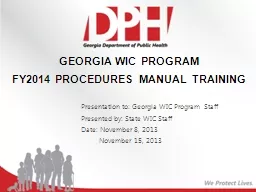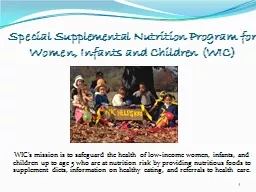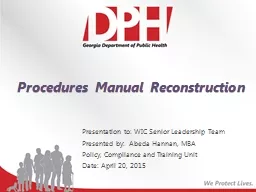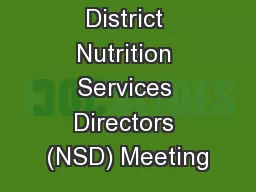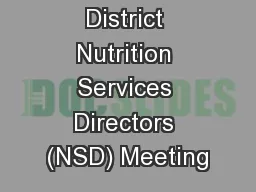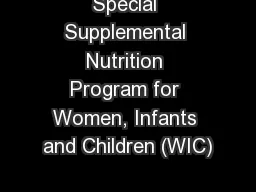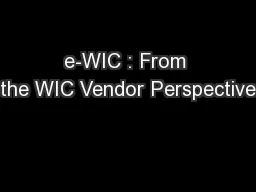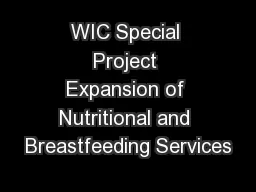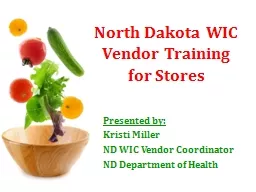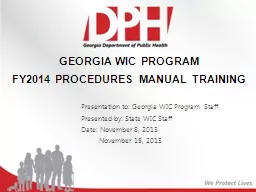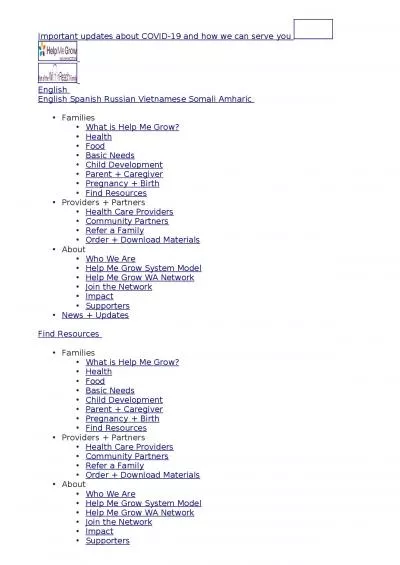PPT-GEORGIA WIC PROGRAM FY2014 PROCEDURES MANUAL TRAINING
Author : phoebe-click | Published Date : 2018-11-08
Presentation to Georgia WIC Program Staff Presented by State WIC Staff Date November 8 2013 November 15 2013 Certification 2 Income Income in WIC means all gross
Presentation Embed Code
Download Presentation
Download Presentation The PPT/PDF document "GEORGIA WIC PROGRAM FY2014 PROCEDURES M..." is the property of its rightful owner. Permission is granted to download and print the materials on this website for personal, non-commercial use only, and to display it on your personal computer provided you do not modify the materials and that you retain all copyright notices contained in the materials. By downloading content from our website, you accept the terms of this agreement.
GEORGIA WIC PROGRAM FY2014 PROCEDURES MANUAL TRAINING: Transcript
Download Rules Of Document
"GEORGIA WIC PROGRAM FY2014 PROCEDURES MANUAL TRAINING"The content belongs to its owner. You may download and print it for personal use, without modification, and keep all copyright notices. By downloading, you agree to these terms.
Related Documents

